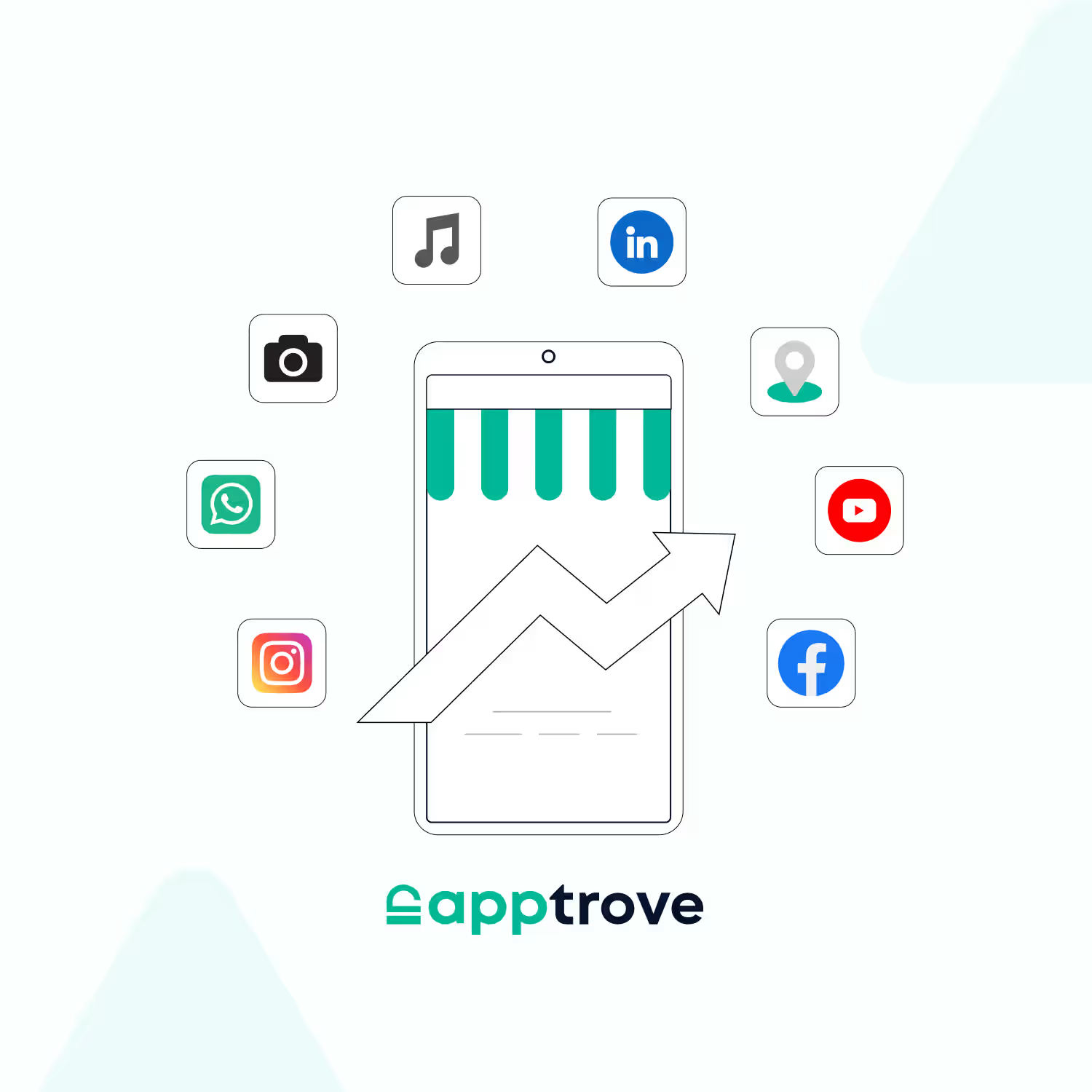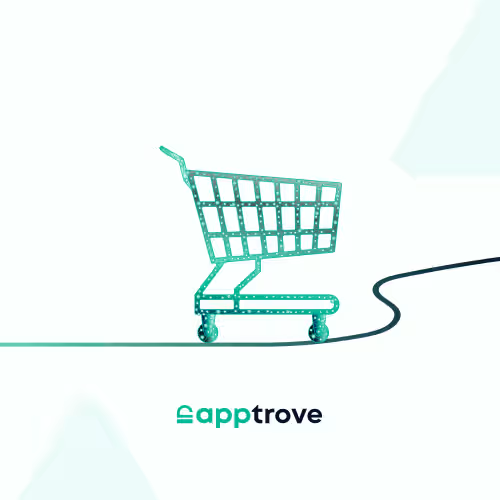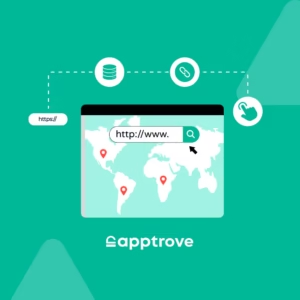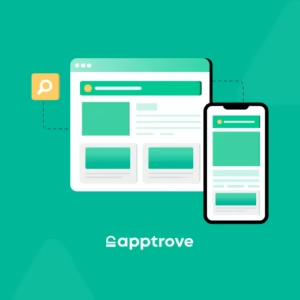In this guide
Running a successful T-Mobile campaign is no child’s play, and a marketer not using deep linking is guaranteeing their downfall.
What exactly does a deep link do? They provide the users with a pathway that takes them from a campaign to the app. For example, you want users to purchase a product from your app, so you can add deep links that enable users to open the product straight away, instead of just opening the app.
This streamlines the user experience. If you think this is an easy enough process, it’s really not! We aim to clarify the exact nature of deep links, how they work, and how you should be using them through this guide. So, without further delay, let’s take a deeper look into the world of deep linking.
Types of deep links
Default Deep Link
These are of no use to marketers who are trying to acquire new users, as they only direct users to an app if it’s already installed. This link will only generate an error message if someone who doesn’t have the app on their device already clicks on it.
Where can these be used then?
They are extremely handy while running retargeting campaigns!
Deferred Deep Link
These are a goldmine for Apptrove as they have the ability to direct users to the App or Play Store if the user does not have the app installed (or to another location that you desire to show the user, such as the app’s website, for more information, and then open the original page that the user was directed to.
Let’s understand with the help of an example. Let’s say the user clicks on an ad for your product, they will be taken to the app store so they can first download the app. After they fire up the app after installation, they won’t have to look for the product, but will be taken directly to their desired product page. These links can only be generated via an SDK integration, and Apptrove provides the best.
Deep links for iOS
Universal Links are the cousin of deep links. They are exclusive to iOS and allow iPhone and iPad users the ability to launch apps. They can point to both a web page and a piece of content inside an app.
In the case of deep links, if the Android user does not have the app already installed, the deep link will utilize the uniform resource identifier scheme to send them to a “Cannot Open Page” error.
Whereas Apple’s universal links solve this problem. Universal links allow routing within the operating system as opposed to introducing JavaScript.
So, when the user clicks on a universal link, iOS checks if any installed device is registered for that domain. If there’s a match, the app is launched immediately without loading the web page. If not, Safari loads the web URL.
Universal link drawbacks
Unlike deep links, if a user who does not have the app installed clicks a universal link, they will be directed to a web view page instead of the App Store. Not a lot of applications support the use of Apple’s universal links.
This is to avoid losing attribution data.

The benefits of deep linking
Deep linking allows marketers to increase conversions by offering an amazing customer experience to both existing and new users.
Top 3 deep linking benefits
Our data show that customers who use deep linking have experienced an increase in their click-to-install rates as well as the share of paying users’ rates.

Click-to-install rates:
Generic campaigns that do not use deep linking to enhance user experience have 5% click-to-install rates, while deep-linking-enabled experiences have been shown to deliver up to 30% higher conversion rates.
Share of paying users:
Deep linking also helps increase the percentage of users who make a purchase after installing an app. For example, When food and drink brands use text messages to engage their customers, an average of 2–3% of users go on to make a purchase.
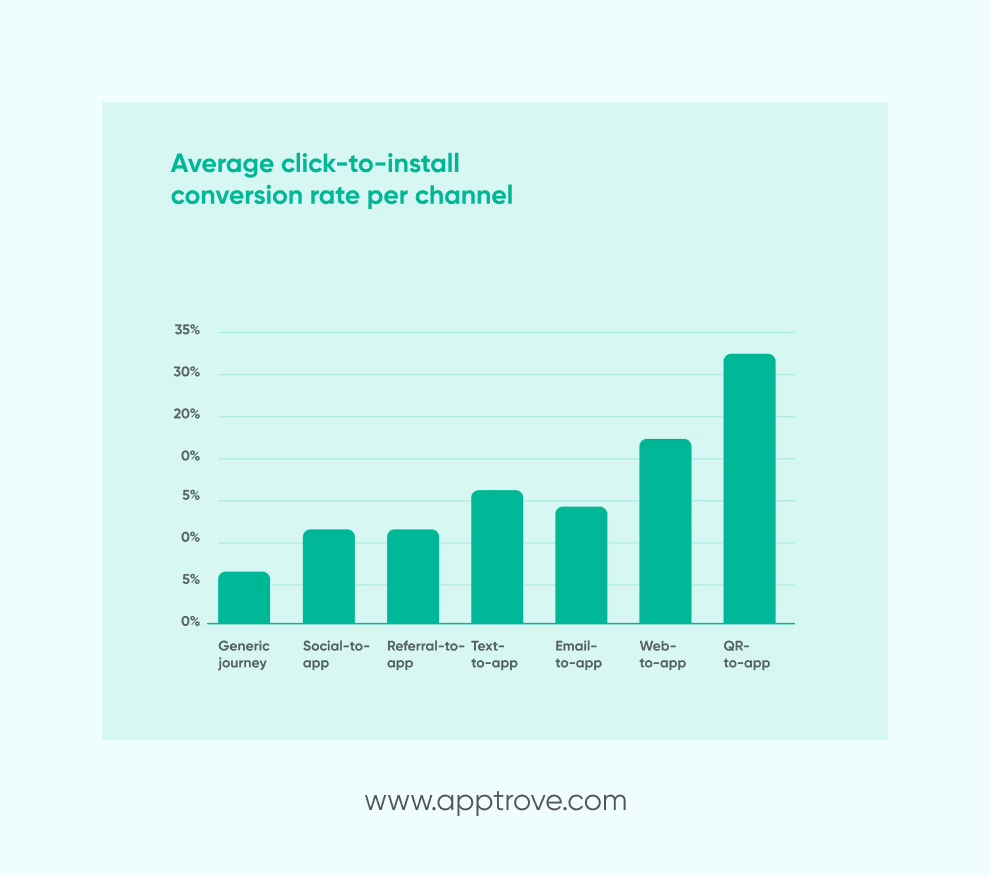
Average click-to-install conversion rates by channel and vertical
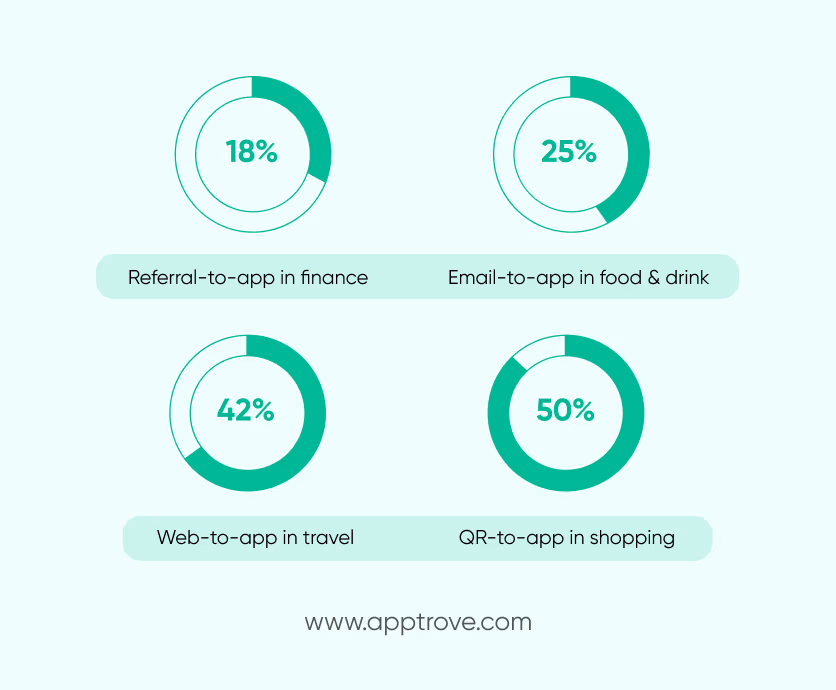
Average share of paying users’ rate by channel and vertical

Use cases: Deep linking & deferred deep linking
Let’s take a look at practical approaches and everyday business challenges that deep linking can help you solve. We will talk about issues related to re-engagement and retention efforts that can be solved via deep linking and those related to user acquisition campaigns that can be tackled with deferred deep linking.
Deep linking for re-engagement and retention
1. Cart abandonment (email marketing/eCommerce)
Almost all retailers suffer from cart abandonment issues. Sending emails to such customers who have goods in their cart but haven’t made the purchase is a common way of re engagement.
Cart abandonment emails have a 45% open and 21% click-through rate. In the example below, an e-commerce store has set up an automated process that sends emails to customers who have left goods in their carts.
The marketer has used a deep linking solution in the email so that the user (who has the app installed) is brought directly to the checkout page when they click on the link in the email.
2. User acquisition (Friend referrals/Gaming)
We as humans will always have more faith in a tried and tested product than in discovering something brand new ourselves. So, a reference from a friend will always help marketers in user acquisition, which is why there are so many incentives from apps for people who refer their product.
In this use case, a gaming app incentivized its users to invite friends to a game. The gamer sends a WhatsApp invite, the friend clicks on the link, downloads the game from the App Store launches the app, and is brought to the waiting area in the app.
Deferred deep linking for app user acquisition
1. Migration to an app (QR code/Banking)
Getting customers to their banking on the app has been a challenge. QR codes are slowly helping to curb this problem. Placing QR codes at key trigger points throughout the journey makes it easier for the customers.
Banks should place QR codes on different pages, like their desktop site, in-branch signage, and marketing materials, so the user can download the app using a simple scan. In the example below, the marketer uses a deep-linking solution to ensure that customers are redirected smoothly to the right app store and then to the right in-app content once the app has been launched.
2. In-store conversion (QR code/Traditional retail)
Traditional retailers can use QR codes to increase in-store sales and drive user acquisition.
If a customer needs more information on the product they intend to purchase, a QR code placed next to each product that has an embedded deep linking engine can help redirect users to review on the right channel (either web or app).
The retailer can even display banners of discounts or other incentives for shoppers if they do their shopping via the app if they land on the web review page.
Where can deep links take users?
Deep links allow users to move between different mobile views and apps. Here are some essential places that they can migrate to with just one click:
- App to App
- Website to App
- Search Result to App
- Social Media to App
- Ad to App
- Mobile Phone Search to App SMS to App
- Email to App
By allowing users to move freely and be able to easily share info or make purchases, not only are you making your mobile app user-friendly, but boosting interaction and sales.
Why choose an MMP over generating deep links yourself?
The cat is out of the bag! Don’t let Apptrove platforms fool you into thinking that deep linking is their proprietary technology.
If you want, you can easily just set up the deep link, integrate, and test. But why should you not do it yourself?
If you are bent on creating deep links yourself, all you will be able to achieve is to get the user to open the app through the link (only if they have the app already installed on their device) While Apptrove deep linking features will:
- Redirect the user to the app store even if the app is not installed on their device
- Let you track deep link activity
You can not perform these functions without additional setup and support. Apptrove will provide you with the best deep linking setup and exceptional support
Deep link with Apptrove
Whether you want to use deep links for running retargeting campaigns for your existing users or gain new users through deferred deep linking, we will help you achieve it all. How? Take a look..
Adding deep links to Apptrove campaigns
If you have deep links registered in your app and would like to use them while tracking user behavior and acquisition, you can read about how to append parameters to your links in this guide to tracker generation.
After you have set it up, you will be able to send the user into your app with the deep link, reattribute the user to the tracker when certain criteria are met, and track any future activity from that user if they have the app installed.
For users who do not have the app installed, you will be able to send the user to the App Store, attribute, or reattribute the user to the tracker and track any future activity, and defer the deep link to open the product after the installation.
Deep linking guidelines
Track your click-to-conversion rates
You can prevent churn if you are on top of your deep linking game. But setup is a primary concern where most apps are failing. It’s difficult to hold onto a consumer if they face constant errors.
So, it is important that you track these drop-offs. If less than half of your users who click a link make it to your landing page, you need to assess why. Is your load time too slow? Are the deep links broken?
You can avoid broken deep links by testing your setup beforehand to make sure that all links work before launching any campaign.
Social media and deep linking
Apps such as Facebook and Instagram don’t redirect users but load the content in an internal review itself. So, even if the user is clicking on your link, they will stay within the social media platform, which makes attribution tricky. Legacy deep links can be applied on social platforms; however, make sure to have a unified approach to deep linking.
Move ahead of just the mobile web
Take other touchpoints into consideration as well when applying deep links. Some of the most beneficial touchpoints are:
- Capture high-intent users on your mobile website who are organically searching for you. Drive them to the right
- In-app content at the right time
- Use deep links in email marketing to move users from the inbox to the native app
- Generate real-time offers on your mobile website to push users to the app.
Contact us if you’d like to know more about our deep link solution. We’d be happy to help you learn.
FAQs
1. What types of deep links should I choose for my mobile campaign?
You should review direct deep links (when an app is installed), deferred deep links (when your app is not installed yet), and contextual deep links (which contain some user or campaign metadata). Each serves a unique use-case, so choose depending on the user journey, the installation status of the app, and how you will measure.
2. How can deep linking improve user retention and engagement for my app?
Deep linking enables you to route users to the relevant content in your app, eliminating the need for them to go through a default home screen, which is a common point of friction and abandonment. This frictionless path motivates users to engage more rapidly and meaningfully, which increases retention and conversion rates over time.
3. Who is responsible for implementing and managing deep links within an organization?
Usually, the mobile product-team and development engineers will put in place the deep-link schemas and fallbacks, and the marketing/analytics teams will specify link parameters, measure performance against KPIs, and optimise campaigns. It is imperative that both sides work together to ensure the links are functional and also create additional strategic value.
4. What are the common pitfalls when implementing deep links in mobile apps?
Typical problems include a failing fallback logic for when the app is not yet installed, failure to verify link-domain associations (notably Android), multiple handlers and disambiguation dialogs are not accounted for, and proper attribution tracking is not handled – all impacting user experience and campaign efficacy.
5. How do deferred deep links differ from traditional deep links and when should each be used?
Standard deep links will only work when the app is already installed and will launch the destination content in the app. Deferred deep links, on the other hand, will detect that the app is not installed, send the user to the app-store, then when the user first opens the app, will show the content that was intended. Use deferred deep links anytime that the user may not already have the app installed.
